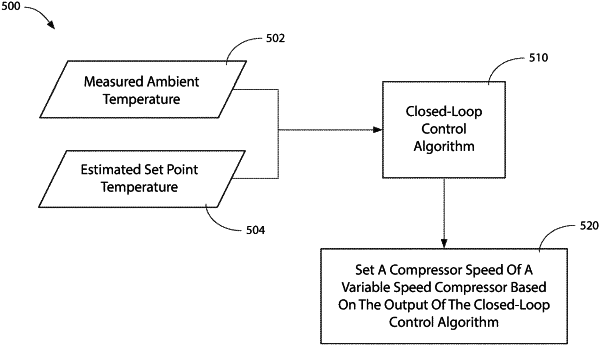| CPC F24F 11/86 (2018.01) [F24F 11/30 (2018.01); F24F 11/63 (2018.01); F24F 2110/10 (2018.01)] | 14 Claims |

|
1. A method of operating an air conditioner unit, the air conditioner unit comprising a housing defining an outdoor portion and an indoor portion, an outdoor heat exchanger disposed in the outdoor portion, an indoor heat exchanger disposed in the indoor portion, and a variable speed compressor in fluid communication with the outdoor heat exchanger and the indoor heat exchanger to circulate a refrigerant between the outdoor heat exchanger and the indoor heat exchanger, wherein the variable speed compressor is a true variable speed compressor operable over a range of speeds including all intermediate speeds between a minimum and a maximum of the range, the method comprising:
measuring an ambient temperature;
estimating a setpoint temperature of the air conditioner unit;
inputting the measured ambient temperature and the estimated setpoint temperature into one of a proportional-integral control algorithm or a proportional-integral-derivative control algorithm;
setting a compressor speed of the variable speed compressor based on the output of the one of the proportional-integral control algorithm or the proportional-integral-derivative control algorithm; and
activating the variable speed compressor at a fixed speed over a first ON cycle prior to estimating the setpoint temperature, wherein the compressor speed is set based on the output of the one of the proportional-integral control algorithm or the proportional-integral-derivative control algorithm in a next ON cycle after the first ON cycle,
wherein estimating the setpoint temperature comprises measuring the ambient temperature at an end of the first ON cycle and storing the measured ambient temperature at the end of the first ON cycle as the estimated setpoint temperature.
|